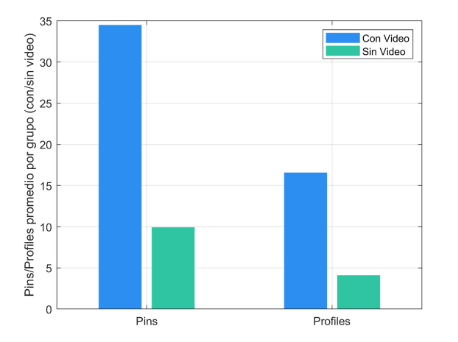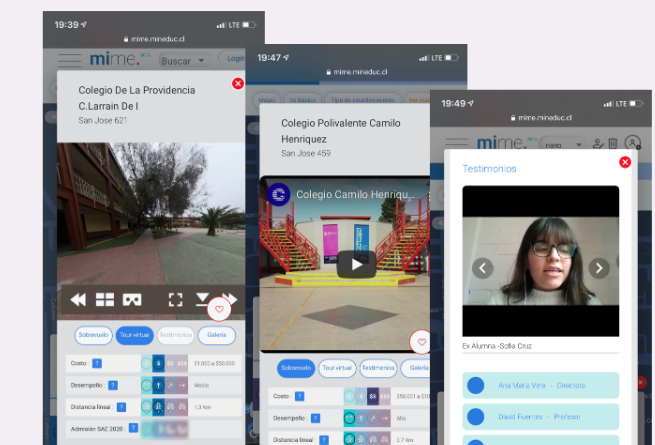Digital School Profiles, Demand, and Equity in Centralized School Choice
Abstract
We study how the design of school information on a centralized admissions platform shapes demand and equity, exploiting a large-scale randomized intervention in Chile's national school-choice system in which roughly 600 schools were assigned to receive digital profiles composed of standardized text, photos, and videos embedded directly in the official explorer. Using platform analytics as well as application and enrollment data, we show that these profiles raise user engagement sharply: during the final SAE week the explorer reached about 114,000 users (roughly 15,000 per day), with families exploring an average of seven schools and three detailed profiles per session, and profiled schools receiving roughly five times more clicks than comparable control schools, especially when the profile contained video. The demand shifts translate into enrollment gains of roughly three additional students per profiled school, implying a net present value near USD 20,000 relative to an implementation cost of about USD 100 per profile. The effects are disproportionately larger for disadvantaged families, closing about 30 percent of the pre-existing application gap between poor and non-poor households. Low-cost improvements in how school attributes are presented can therefore reallocate demand toward under-chosen schools, increase enrollments, and enhance equity within centralized school-choice systems.
Claudia Allende, Christopher A. Neilson, Nano Ochoa, "Digital School Profiles, Demand, and Equity in Centralized School Choice", Work in progress, 2025.
@article{ digital-school-profiles_2025,
title = "Digital School Profiles, Demand, and Equity in Centralized School Choice",
author = "Allende, Claudia and Neilson, Christopher A. and Ochoa, Nano",
journal = "Work in progress",
year = "2025",
note = "wip"
,
abstract = "We study how the design of school information on a centralized admissions platform shapes demand and equity, exploiting a large-scale randomized intervention in Chile's national school-choice system in which roughly 600 schools were assigned to receive digital profiles composed of standardized text, photos, and videos embedded directly in the official explorer. Using platform analytics as well as application and enrollment data, we show that these profiles raise user engagement sharply: during the final SAE week the explorer reached about 114,000 users (roughly 15,000 per day), with families exploring an average of seven schools and three detailed profiles per session, and profiled schools receiving roughly five times more clicks than comparable control schools, especially when the profile contained video. The demand shifts translate into enrollment gains of roughly three additional students per profiled school, implying a net present value near USD 20,000 relative to an implementation cost of about USD 100 per profile. The effects are disproportionately larger for disadvantaged families, closing about 30 percent of the pre-existing application gap between poor and non-poor households. Low-cost improvements in how school attributes are presented can therefore reallocate demand toward under-chosen schools, increase enrollments, and enhance equity within centralized school-choice systems."
,
url_article = ""
}
Project overview
Digital School Profiles is a school-level randomized experiment embedded in Chile’s national explorer that offers selected schools standardized, rich-media pages (text, photos, video) directly inside the SAE platform. Engagement spikes during the final admissions week, when roughly 114k users explore seven schools and three profiles per session on average, and profiled schools receive about five times more clicks than control schools. These online shifts map into roughly three additional enrolled students per profiled school, an effect that is especially strong for disadvantaged families, closing about 30% of the baseline poor versus non-poor application gap. At an implementation cost of about USD 100 per profile, the net present value of the additional enrollments (around USD 20k) makes the intervention extremely cost-effective.
Extended abstract
Centralized school-choice platforms increasingly mediate how families learn about schools, but the design of the information layer inside these platforms remains under-studied. In Chile’s national School Admission System (SAE), roughly 400,000 families apply annually, yet portfolios are short (3.1 schools on average), many high-performing schools have empty seats, and families—especially poorer ones—severely misperceive the quality and availability of nearby options. Applicants believe they are targeting high-performing schools far more often than they actually are, and they substantially underestimate how many such schools exist in their neighborhoods. At the same time, schools face high fixed marketing costs and have weak incentives to invest in professional content that might only be viewed if families navigate to scattered websites or social media pages. Information about schools is therefore a public good that is undersupplied by the market.
We study a large-scale randomized intervention that embeds high-quality “digital profiles” for schools directly inside Chile’s official explorer, MIME. These profiles standardize and enrich how schools present themselves by integrating official Ministry data with photos, scripted text about the educational project, and professionally produced video tours (360° walkthroughs, drone footage, and short testimonials from community members). In collaboration with the Ministry of Education and Fundación Reinaldo Solari, we randomly assigned approximately 600 schools to receive these fully featured profiles, while control schools retained a basic text-only page generated from administrative data.
Using detailed clickstream data linked to administrative records on applications, assignments, and enrollment, we document large effects on attention and demand. After launch, MIME reached roughly 114,000 unique users in a single week (about 15,000 per day), with families exploring an average of seven schools and three digital profiles per session. Schools with digital profiles received between three and five times more clicks than comparable control schools, and those with video tours were disproportionately represented among the most-viewed schools nationally (four of the ten most-visited schools had video).
This surge in visibility translated into meaningful changes in application behavior and enrollment. Treated schools experienced a 20–25% increase in applications relative to control, corresponding to hundreds of additional applications in the experimental sample and an average gain of roughly three additional enrolled students per treated school per year. Combining these enrollment gains with per-pupil funding, we estimate a net present value of approximately USD 20,000 per school against an implementation cost of roughly USD 100–200 per profile, making this a highly cost-effective policy lever.
Importantly, richer, standardized content reduces pre-existing socio-economic gaps in applications. Digital profiles, particularly when paired with personalized recommendation “cartillas,” close around 30% of the baseline gap in applications to high-performing schools between poorer and less-poor families, consistent with the idea that disadvantaged households face higher search costs and weaker informal information networks. Low-cost improvements in the presentation and standardization of school information inside centralized platforms can thus reallocate demand, help under-chosen schools fill empty seats, and reduce socio-economic inequities—suggesting that market design for school choice must treat information architecture as a first-order policy instrument alongside the assignment algorithm itself.
Figures


Working notes
- Extended sketch (internal): digital_profiles_sketch.md
- Current assets will expand to include figures comparing clickstream effects, SES gap closures, and cost-benefit calculations as the draft progresses.
- Coauthors: Claudia Allende, Nano Ochoa
- Published: Work in progress
- Date: 2025-11-16